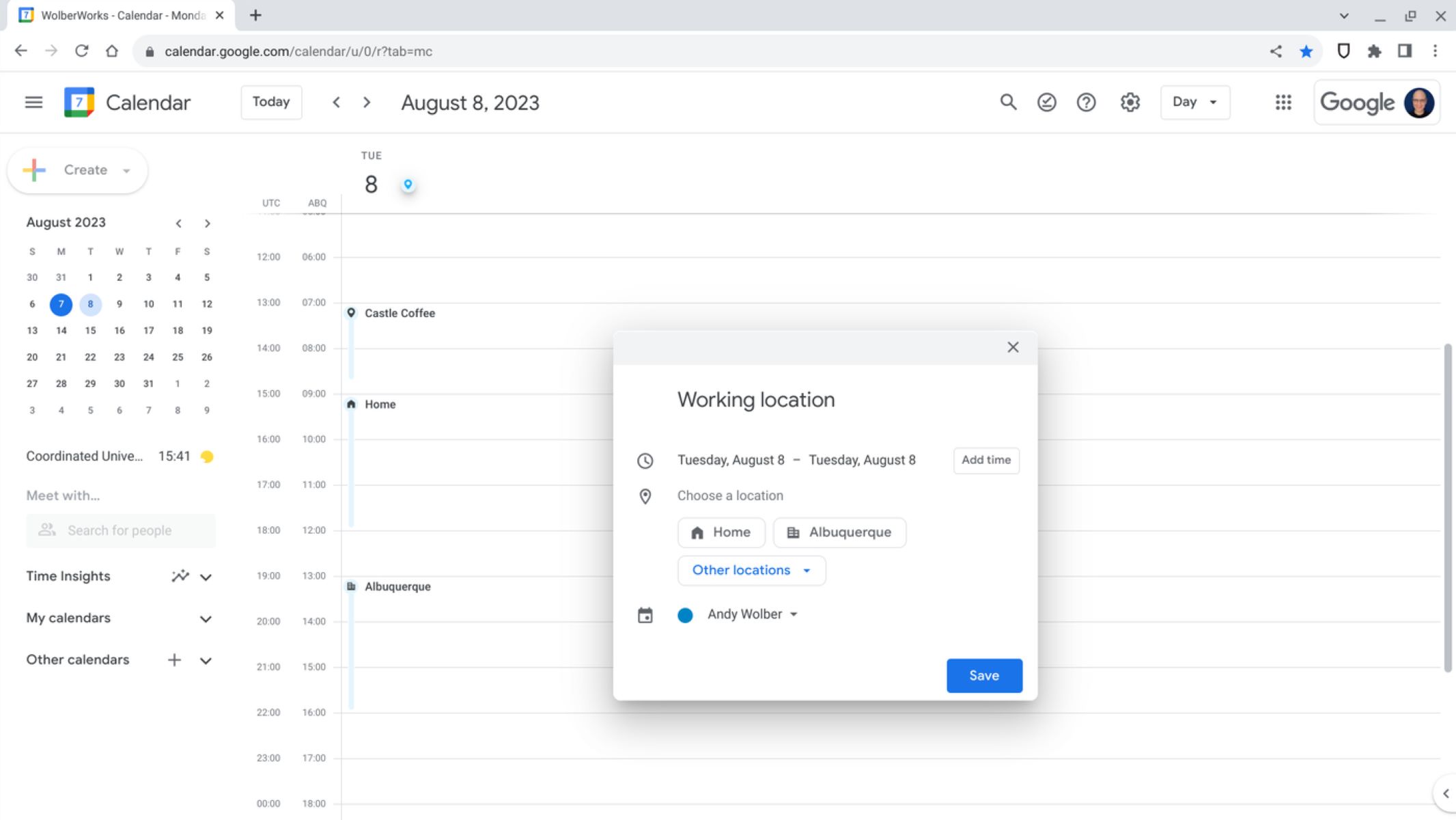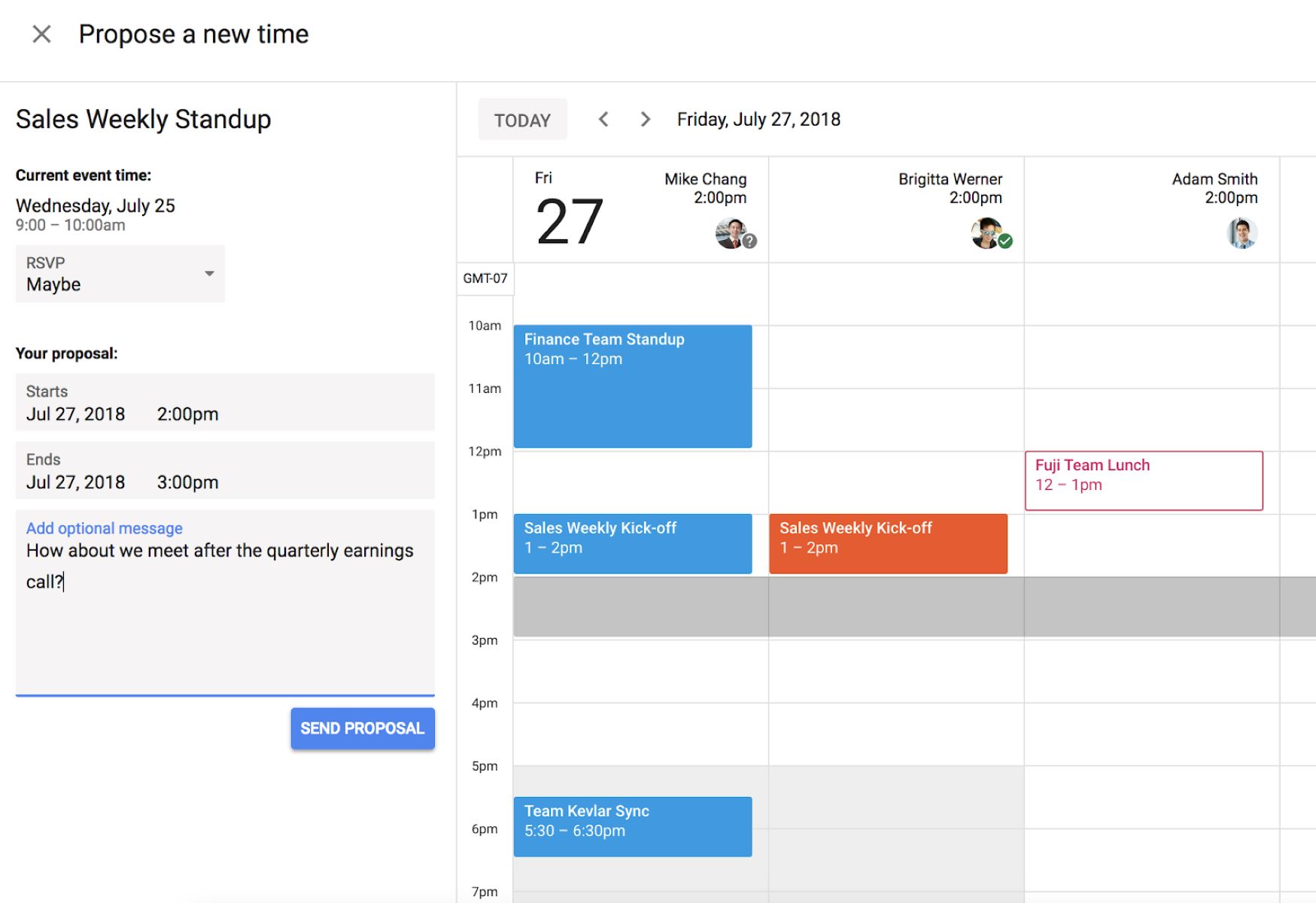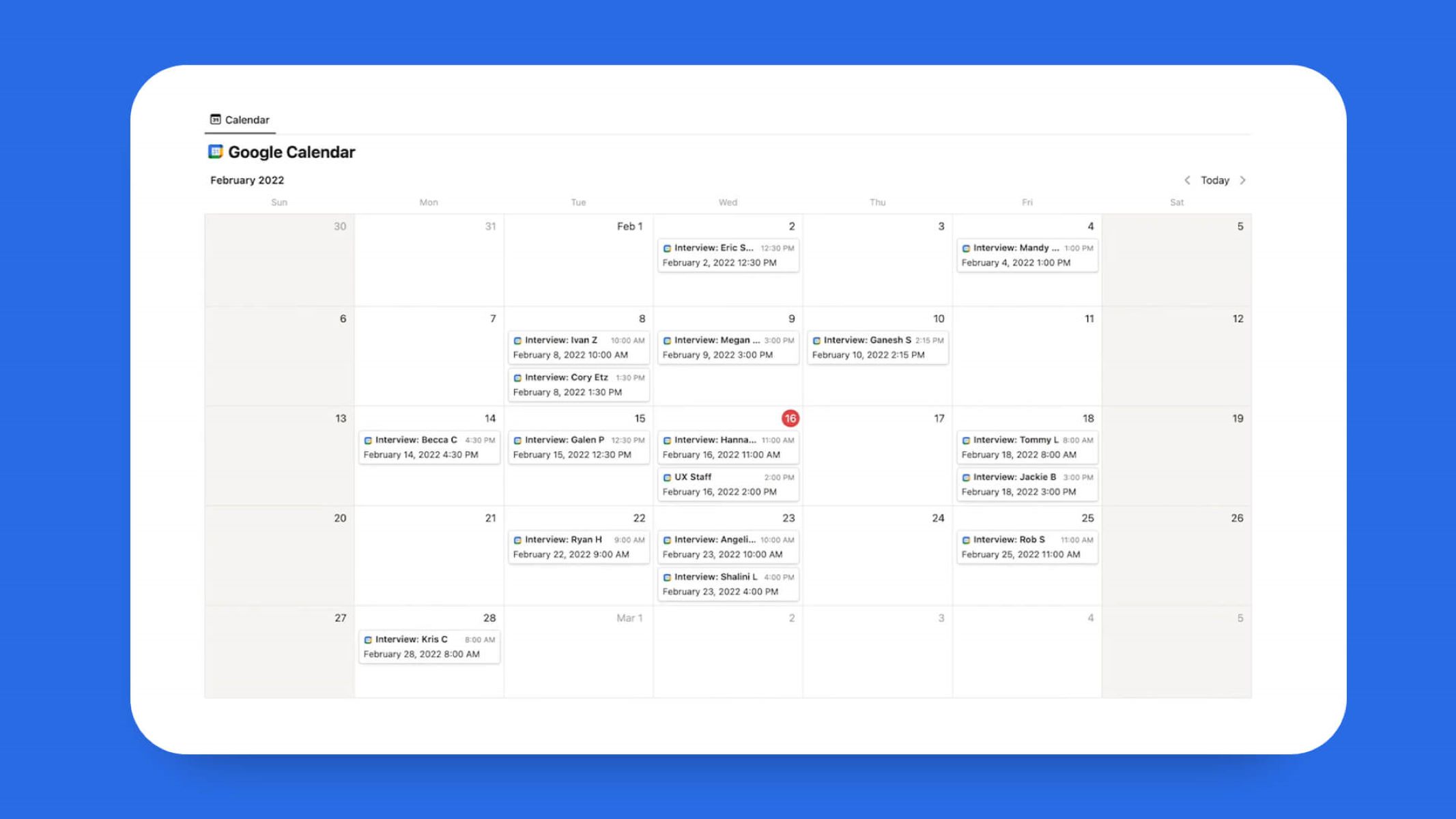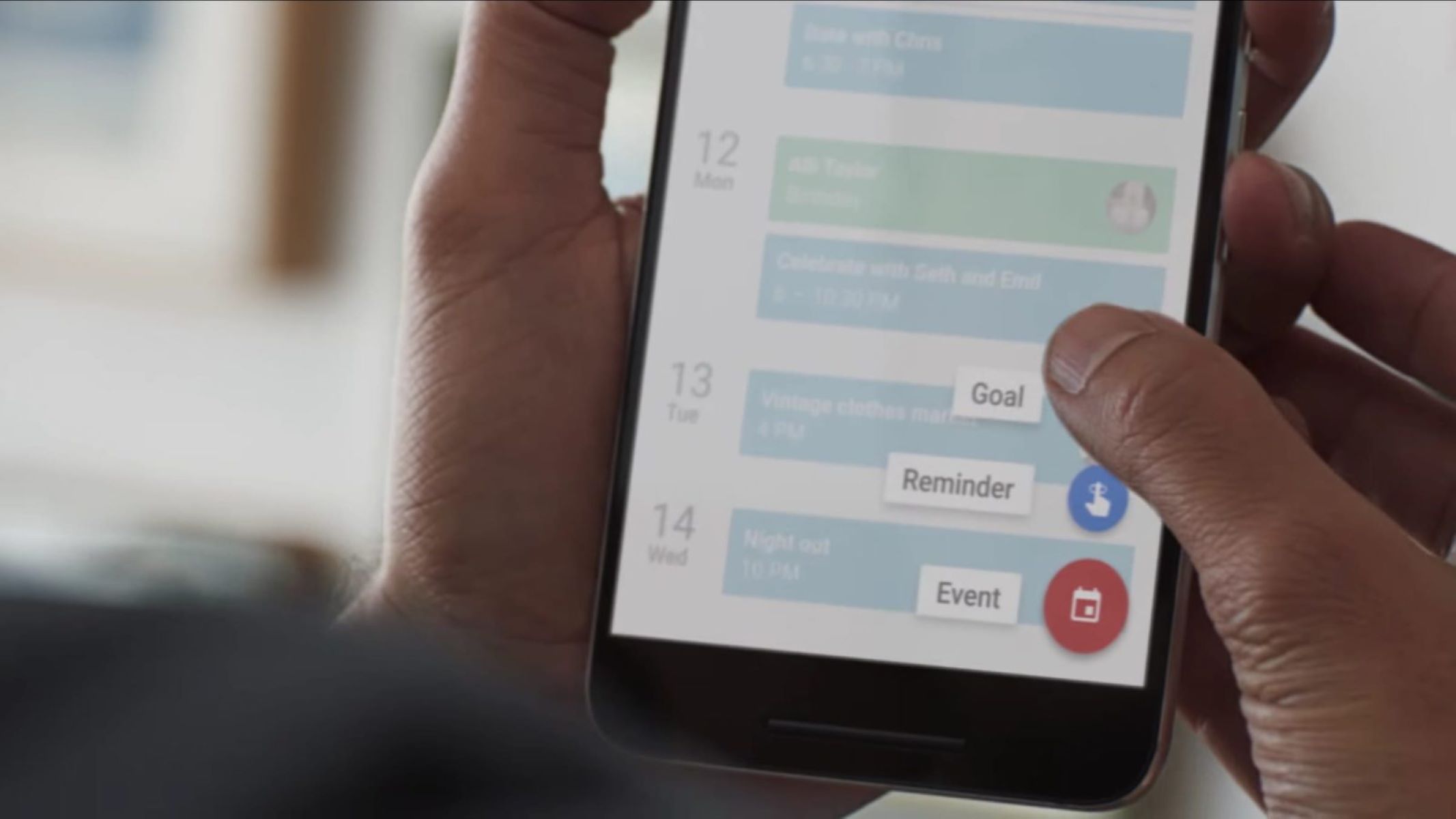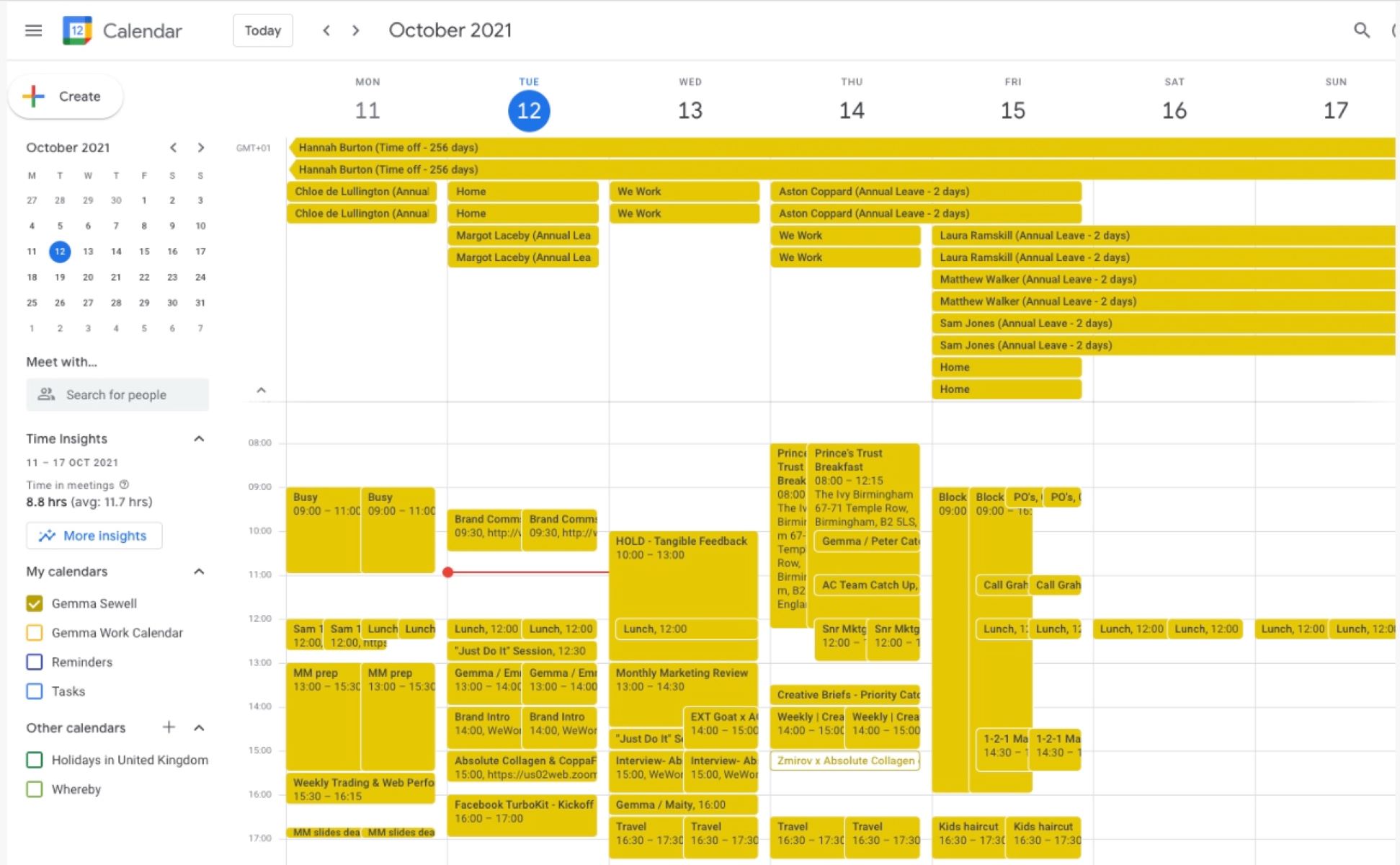Introduction
Welcome to the world of Google Calendar, a powerful tool that helps you stay organized and manage your schedule efficiently. Have you ever encountered a situation where you need to suggest a new time for a meeting or an event? Google Calendar has a convenient feature that allows you to propose a new time to accommodate everyone’s availability. In this article, we will guide you through the process of suggesting a new time in Google Calendar, ensuring that you can easily reschedule events and avoid time conflicts.
Whether you are part of a team working on a project, coordinating a group meeting, or simply trying to find the best time for a social gathering, suggesting a new time in Google Calendar can save you the tedious back-and-forth of finding a suitable schedule. With just a few simple steps, you can propose an alternative time that works for all attendees, streamlining the scheduling process and reducing unnecessary email exchanges.
In this guide, we will walk you through the step-by-step process of suggesting a new time in Google Calendar, from accessing your calendar to sending your new time proposal. You will also have the option to include a note or reason for your suggested time change, providing additional context to the participants. So, let’s dive in and explore the easy and efficient way to suggest a new time in Google Calendar!
Why suggest a new time in Google Calendar?
Google Calendar offers a range of features to help you manage your schedule effectively, and suggesting a new time is one of its most valuable functionalities. Here are a few reasons why you might want to propose a new time in Google Calendar:
1. Resolving scheduling conflicts: There are times when the initially scheduled time for a meeting or event no longer works for all participants. By suggesting a new time, you can avoid scheduling conflicts and ensure that everyone can attend without any overlap in their calendars. This helps to streamline the scheduling process and enhances collaboration by eliminating the need for multiple iterations of rescheduling discussions.
2. Finding the best time for a group: When organizing a gathering or meeting involving multiple individuals, it can be challenging to find a time that suits everyone’s availability. By using the “propose a new time” feature in Google Calendar, you can suggest alternative time slots and allow participants to vote or provide feedback on the proposed options. This democratic approach simplifies the decision-making process and increases the chances of finding a time that works for the majority.
3. Adapting to changing circumstances: Life is unpredictable, and unexpected events or circumstances may arise that require a change in the scheduled appointment. By suggesting a new time in Google Calendar, you can quickly adjust the event to accommodate any unforeseen circumstances. This flexibility ensures that all participants can adapt to changing situations without disrupting their entire schedule.
4. Minimizing email exchanges: Collaborating with a group of people often leads to a barrage of emails to coordinate schedules. By utilizing the “propose a new time” feature, you can minimize the need for lengthy email exchanges and avoid inbox clutter. This streamlined approach saves time and effort for both the event organizer and participants, allowing everyone to focus on more important tasks.
Suggesting a new time in Google Calendar not only improves efficiency but also promotes effective communication and collaboration among team members. It empowers you to take control of your schedule and find solutions that work for everyone involved. Now that you understand the benefits, let’s explore the step-by-step process of suggesting a new time in Google Calendar!
Step-by-step guide on suggesting a new time
Now that you’re familiar with the reasons why suggesting a new time in Google Calendar is beneficial, let’s dive into the step-by-step process of how to do it:
- Accessing Google Calendar: Open your web browser and navigate to Google Calendar by typing in “calendar.google.com” in the address bar. Sign in to your Google account if you aren’t already logged in.
- Opening the event details: Locate the event that you want to suggest a new time for. Click on the event to open its details.
- Clicking on the “Propose a new time” option: Within the event details, you’ll find an option called “Propose a new time” or a similar phrase. Click on this option to initiate the process of suggesting a new time.
- Choosing the suggested time: A calendar view will appear, displaying the availability of the participants involved. Select a new time that works for everyone by clicking on the desired time slot. The selected time slot will be highlighted.
- Adding a note or reason for the new time suggestion (optional): If you want to provide additional context for the suggested time change, you can add a note or reason in the text field provided. This can help participants understand the motive for the suggested time and make an informed decision.
- Sending the new time suggestion: After finalizing the new time and, optionally, adding a note, click the “Send” or “Propose” button to send the new time suggestion to the event attendees. They will receive a notification and can review and respond to the proposed time change.
It’s important to note that suggesting a new time does not automatically change the event time for all participants. It serves as a proposal that allows participants to consider and respond to the suggested time change. Once all participants have reviewed the proposal and reached a consensus, the event organizer can manually update the event time based on the agreed-upon new time.
By following these simple steps, you can easily suggest a new time in Google Calendar and streamline the process of rescheduling events. It promotes efficient collaboration and ensures that everyone’s schedules align seamlessly. Take advantage of this feature to avoid scheduling conflicts, accommodate changing circumstances, and minimize email exchanges. Now, it’s time to put this knowledge into practice and become a pro at suggesting new times in Google Calendar!
Accessing Google Calendar
The first step in suggesting a new time in Google Calendar is accessing the platform itself. To do this, follow these simple instructions:
- Open your preferred web browser (Google Chrome, Mozilla Firefox, Safari, etc.) on your computer or mobile device.
- In the address bar of your web browser, type “calendar.google.com” and press Enter.
- If you are not already signed in to your Google account, you will be directed to the login page. Enter your email address and password, and click the “Next” button to proceed.
- If you have enabled two-factor authentication, you may be prompted to enter the verification code sent to your mobile device or select “Allow” on your authentication app.
- After successfully signing in, you will be redirected to your Google Calendar home page. Here, you will see an overview of your upcoming events and appointments.
Alternatively, you can access Google Calendar through the Google Apps grid menu on the top right corner of your Gmail inbox page. Simply click on the grid icon, and then select “Calendar” from the drop-down menu. This will directly take you to your Google Calendar interface.
It is also worth noting that Google Calendar is available as a mobile app, which can be downloaded from the Google Play Store (for Android users) or App Store (for iOS users). Once installed, launch the app, and sign in using your Google account credentials to access your calendar on the go.
By successfully accessing Google Calendar, you are now ready to move on to the next step in suggesting a new time for your events. Keep following this guide for a seamless experience in managing your schedule and collaborating with others.
Opening the event details
After accessing Google Calendar, the next step in suggesting a new time is to open the details of the event you want to reschedule. To accomplish this, follow these steps:
- On the Google Calendar home page, locate the event that you wish to suggest a new time for. Events are typically displayed as blocks of time on the calendar grid, containing the event title and any relevant details.
- Click on the desired event to open its details. This action will display a pop-up window or a side panel, depending on the view and settings of your calendar.
- In the event details view, you will find a range of information about the event, such as the event title, location, duration, attendees, and any notes or attachments associated with it. This information is essential for you to review before proposing a new time, as it helps you determine the feasibility and impact of the schedule change.
- Take note of the event’s current date and time to ensure that you can propose an alternative time slot that is suitable for all participants.
- If you need more information about the event or want to make changes other than suggesting a new time, you can utilize the available options in the event details view. These options may include editing the event, adding or removing attendees, changing the location, or deleting the event entirely. However, for the purpose of suggesting a new time, focus on the relevant fields and buttons related to rescheduling.
Opening the event details allows you to gather all the necessary information about the event and its current schedule. It’s crucial to have a clear understanding of the event’s details before proceeding to suggest a new time. By following this step, you are now ready to propose an alternative time that accommodates the availability of all participants.
Clicking on the “Propose a new time” option
Once you have opened the event details in Google Calendar, the next step is to click on the “Propose a new time” option. This feature allows you to suggest an alternative time for the event. Follow these steps to proceed:
- In the event details view, look for a button or link labeled “Propose a new time” or a similar phrase. The position and appearance of this option may vary depending on the version of Google Calendar you are using, but it is typically located near the current event time.
- Click on the “Propose a new time” option to initiate the process. This action will signal to Google Calendar that you wish to suggest a different time for the event, accommodating the availability of all participants.
- After clicking on the “Propose a new time” option, a calendar view will appear. This view displays the availability of all participants involved in the event, allowing you to select a suitable time slot. Available time slots are typically marked in green or shown as vacant on the calendar.
- Take a moment to review the availability of all participants and consider any scheduling constraints or preferences that need to be taken into account. This ensures that the proposed time is agreeable to everyone involved.
- Click on the desired time slot from the calendar view to select it as the suggested new time for the event. The selected time slot will typically be highlighted or marked in some way, indicating your choice.
By clicking on the “Propose a new time” option, you are taking the initiative to propose an alternative time that better suits the availability of all participants. This feature allows for a collaborative approach to scheduling, making it easier to find a time that works for everyone involved. Once you have chosen the desired time slot, you can proceed to the next steps to finalize and send your new time suggestion to the event participants.
Choosing the suggested time
After clicking on the “Propose a new time” option in Google Calendar, the next step is to choose the suggested time for the event. Here’s how you can do it:
- A calendar view will appear, showing the availability of all participants involved in the event. This view allows you to see the schedules of the attendees to ensure that the proposed time does not conflict with their existing commitments.
- Examine the calendar view and look for a time slot that works for all participants. Available time slots are typically marked in green or shown as vacant on the calendar. Avoid selecting time slots that are already occupied by other events or marked as busy for any of the participants.
- Consider the duration of the event and allow sufficient time for all necessary activities or discussions. Ensure that the selected time slot allows for a comfortable and appropriate duration for the event to take place.
- Click on the desired time slot from the calendar view to select it as the suggested new time for the event. The selected time slot will typically be highlighted or marked in some way to indicate your choice.
- If you are unable to find a suitable time slot that accommodates all participants, you may need to consider alternative options. You can propose multiple potential time slots by repeating the process and selecting different options for participants to choose from.
Choosing the suggested time requires careful consideration and attention to the availability and preferences of all participants. By selecting a time slot that works for everyone, you increase the likelihood of reaching a consensus and avoiding scheduling conflicts. Once you have chosen the desired time, you can proceed to the next steps to add a note or reason for the new time suggestion (if needed) and send the proposal to the event attendees.
Adding a note or reason for the new time suggestion (optional)
In Google Calendar, you have the option to add a note or reason for the new time suggestion when proposing a different schedule for an event. While this step is optional, providing additional context or explanation can help the participants understand the motive behind the proposed time change. Here’s how you can add a note or reason:
- After selecting the desired time slot for the event, there is usually a text field or comment box provided where you can enter a note or reason for the new time suggestion.
- Click on the text field to activate it and start typing your note or reason. Be concise and clear in your explanation, providing relevant details that will help participants understand why you believe this new time is suitable.
- Consider including any relevant information that may impact the scheduling decision, such as conflicting events, availability limitations, or specific requirements that necessitate the new suggested time.
- Make sure your note or reason is easy to understand and conveys your intentions clearly. Avoid being overly wordy or including unnecessary details that may confuse the participants.
- Take a moment to review your note or reason before proceeding to the next step. Ensure that it accurately reflects the purpose of the new time suggestion and provides participants with useful information about your rationale.
Adding a note or reason for the new time suggestion is particularly beneficial when there are multiple potential time slots or if the event involves complex logistics. This contextual information can help participants make an informed decision and provide valuable feedback on the proposed time change. However, if you feel that no additional explanation is necessary, you can proceed to the next step and send the new time suggestion without adding a note.
Sending the new time suggestion
Once you have selected the desired time slot for the event and, if necessary, added a note or reason for the new time suggestion, the final step is to send the proposal to the event attendees. Here’s how you can do it:
- Review the event details, including the proposed time and any accompanying note or reason, to ensure everything is accurate and aligned with your intentions.
- Locate the button or option that allows you to submit or send the new time suggestion. This button is typically labeled as “Send,” “Propose,” or a similar term.
- Click on the designated button to send the new time suggestion to all the event participants.
- After sending the proposal, Google Calendar will notify the event attendees about the suggested time change. The participants will receive a notification in their calendars and, depending on their notification settings, may also receive emails or mobile notifications regarding the proposed new time.
- As the event organizer, you will also receive notifications regarding the participants’ responses to the new time suggestion. This allows you to track the progress and reactions from the attendees.
- Once all participants have reviewed the proposal and provided their feedback or agreement, you can manually update the event time based on the agreed-upon new time. This ensures that everyone is on the same page and the event is scheduled at a time that works for all.
By sending the new time suggestion in Google Calendar, you have taken the necessary steps to propose an alternative schedule that accommodates the availability of all participants. This feature facilitates collaborative scheduling and eliminates the need for numerous back-and-forth communications regarding scheduling conflicts. Keeping track of the participants’ responses and finalizing the event time based on mutual agreement ensures efficient coordination and a seamless scheduling process.
Now that you have successfully sent the new time suggestion, you can conclude the process and have confidence in effectively managing your events and schedules using Google Calendar.
Conclusion
Suggesting a new time in Google Calendar is a valuable feature that simplifies the process of rescheduling events and ensures that all participants can attend without conflicts. By following the step-by-step guide outlined in this article, you can easily propose alternative times and streamline the scheduling process.
We explored the reasons why suggesting a new time in Google Calendar is advantageous, including resolving conflicts, finding the best time for a group, adapting to changing circumstances, and minimizing email exchanges. These benefits highlight the efficiency and collaboration that can be achieved through this feature.
We discussed each step in detail, from accessing Google Calendar to sending the new time suggestion. Understanding how to open event details, click on the “Propose a new time” option, choose the suggested time, and optionally add a note or reason ensures a smooth experience in suggesting a new time.
With these instructions, you are equipped to navigate Google Calendar with ease and propose new times that accommodate the availability and preferences of all participants. By leveraging this feature effectively, you can save time, minimize scheduling conflicts, and enhance collaboration.
So, next time you encounter a scheduling conflict or need to find the best time for a group, remember the power of suggesting a new time in Google Calendar. Embrace this feature, and watch as the scheduling process becomes smoother, more efficient, and more collaborative than ever before.







